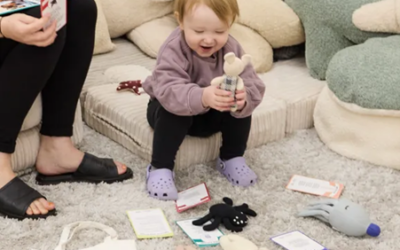Exploring the World: Japan
How much do you know about Japan?
Our fact guide will get you clued up on this charming country with lots of interesting information to share with your children.
Keep reading below to find out more!
Where is Japan?
Japan is an island country located in East Asia and is made up of four main islands called Hokkaido, Honshu, Shikoku, and Kyushu. However, there are thousands more islands that also make up Japan! The capital city is Tokyo, and it’s the largest city in the country and considered to be one of the most livable cities in the world.
Geographically, nearly four-fifths of Japan is covered in mountains, with their highest mountain being Mount Fuji. They are also located on the Pacific Ring of Fire and as a result this can lead to volcanic eruptions and tsunamis in the country.
What Language is Spoken?
The official and primary language is Japanese. However, there are many traditional languages that are still spoken. For example, the Ryukyuan languages spoken in the Ryukyu islands and the Ainu language, which is classed as endangered.
The Japanese language also has three writing styles, but the characters can be tricky to learn. However, there are only 48 sounds in Japanese so learning to speak is easier than learning to write.

Food
Japanese food is known as being very healthy and nutritious. The Japanese take great care when arranging their food on the table and the food is laid out in a beautiful display.
Staple foods include rice, soup, soy, and vegetables. With Japan being an island, seafood is also extremely common and enjoyed either grilled or raw, for example sushi and sashimi. As well as rice, noodles are frequently eaten in various ways including ramen, udon, and soba.
Table manners are very important in Japan. The Japanese mostly eat their food with chopsticks, and they should always be used properly. For example, you shouldn’t play with your chopsticks or point and rub them together. Additionally, it is seen as impolite to waste food or leave certain parts of the food uneaten. Always eat what you’ve got on your plate! On the other hand, slurping your food is actually a good sign in Japan as it shows that you’re really enjoying your dish!
Culture and Traditions
Japan has a very fascinating and rich culture that stems back centuries. They believe in full religious freedom, but Buddhism and Shinto are the most practiced religions. Shinto is an indigenous religion and focus on the importance of purity, respecting the family and nature. Buddhism concentrates on achieving enlightenment through meditation and spiritual and physical labour.
One representation of Japanese culture can be seen through clothing. The Kimono is a traditional garment that can be worn by both men and women. They can come in a variety of elegant styles and colours. The type of style worn can depend on criteria such as occasion, marital status, age and even the season.
Sports is also significant in Japanese culture. Sumo wrestling is Japan’s national sport and has existed in the country for thousands of years. Western sports such as football have gained popularity and the Japanese national football team has competed in the World Cup six times.
Popular Japanese culture has gained a lot of exposure in the western world. For instance, cartoon television shows and films called “anime” and comics called “manga” have a global fanbase. Also, many video games such as Super Mario, Animal Crossing and Pokémon were created in Japan by Nintendo. Even the selfie originally became popular in Japan! From the late 1990s to early 2000s, people would use photo sticker booths and choose backgrounds and effects to add to their photos.
Download and print out our blank flag of Japan below for a fun colouring activity for your children!
Related blogs
Your Guide to the School-Based Nursery Capital Grant
What is the School-Based Nursery Capital Grant? For schools aiming to enhance their nursery facilities, the School-Based Nursery Capital Grant provides a simple funding solution. This grant is open to eligible state-funded primary schools in England that...
Top Tips for Play with Rhyme Time
Author: Alice Sharp Alice is nationally and internationally recognised as using a dynamic and innovative approach to children. She uses an experiential approach in her role as early childhood influencer, keynote speaker, mum and writer. She is waiting to uplift...
Top Tips for Play with Gems, Jewels and Sparkles!
Author: Alice Sharp Alice is nationally and internationally recognised as using a dynamic and innovative approach to children. She uses an experiential approach in her role as early childhood influencer, keynote speaker, mum and writer. She is waiting to uplift...



